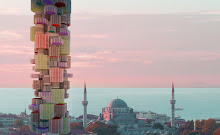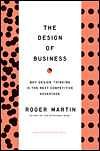Flying from Los Angeles to Toronto to Paris to Cairo takes a long long time and includes plenty of sitting, waiting, reading, eating and sleeping in airport terminals. Sometimes, when I have so much time to pass, I like to fantasize about going to other locations I see on the departure boards, such as Cape Town or Rio de Janeiro or Agra or Bucharest.... However, it is also during these long intervals that I like to people watch. I like to see who is going where.
For example on October 23, 2008, I had six hours to wander up and down the aisles at Terminal F at Charles de Gaulle airport in Paris before my connecting flight would start boarding. On my way to the croissant and coffee cart, I saw it at Gate 47 throngs and throngs of Chinese people dressed in rather simple attire sharing their packed lunches. That in itself was perhaps not as curious as where they were going - Malabo. Malabo? Where is Malabo? Should I know about Malabo? From the airline representatives at the counter I found out that it was in Africa. It was not until I returned home and looked up Malabo did I find out that it is the capital and largest city of Equatorial Guinea and it is located on Bioko Island at the rim of a sunken volcano.
 Map of Equatorial Guinea and its capital Malabo
Map of Equatorial Guinea and its capital Malabohttp://student.britannica.com/eb/art/print?id=54948&articleTypeId=0
I assumed it had to do with China's growing need for oil - as the second largest consumer of oil in the world. (I knew that Chinese thirst for oil from another African country - Sudan had been inflaming the genocide in Darfur. Unfortunately, the race for natural resources trumps a social conscience in many a country). At the time I was very intrigued with my random discovery. I felt like I had uncovered some huge national Chinese secret. The Chinese entrepreneurial spirit and diaspora always fascinated me - I have found mini Chinatowns and Chinese run restaurants in the most obscure locations - but even this location at seemed extreme to me. Then I read that starting June 2009, Americans will be able to fly Delta Airlines direct from Atlanta to Malabo. I guess there must be quite a generous supply of crude oil reserves in Equatorial Guinea.
Then quite accidentally the other day, I was sorting through some old, still unread magazines on my bedside and came across the March/April 2008 issue of Foreign Affairs and on its cover was the title to an article by Harry Broadman, economic advisor at the World Bank - "China and India Go to Africa." If I had done my reading before my trip in October I would have known that Africa's exports to China increased at a whopping annual rate of 48% between 2000 and 2005. Most of this activity had to do with oil and mining as I had suspected. What I did not know was that 85% of the continent's exports to China came from 5 countries - the oil exporting nations of Angola, Nigeria, the Republic of Congo, Sudan and Equatorial Guinea. And so it seems that the Chinese are presently investing heavily in building roads and in oil production in Equatorial Guinea. According to Dawn (Pakistan's leading newspaper), the leadership of this tiny country view China as their principal development partner. Evidence of this Chinese presence is clearly visible throughout Malabo.
In doing some final bits of research to complete this post, I came across two additional facts about Equatorial Guinea that blew me away. According to the CIA World Factbook over the past decade, Equatorial Guinea have become the 3rd largest exporter of oil in Sub-Saharan Africa. And while this country ranks near the bottom of the UN development index, in 2004, according to the BBC, it had the world's fastest growing economy!
I always knew that traveling was a tremendous learning and growth opportunity. I just never anticipated increasing my IQ while jetlagged in transit.















































































